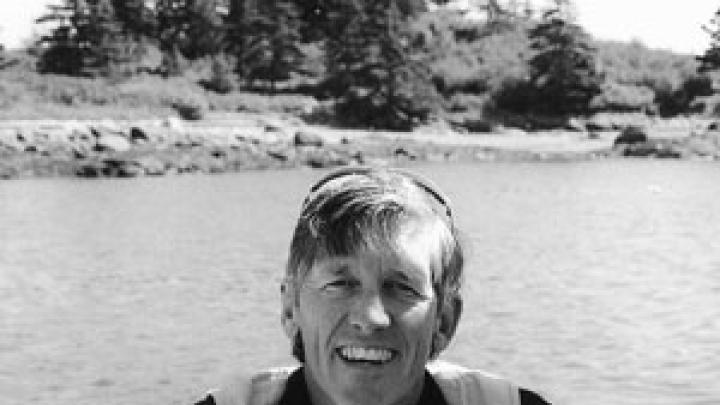There are almost 5,000 islands off the coast of Maine, most large enough only for a few tern or osprey nests, but some the size of a small city. Philip Conkling ’70 has set foot on more than a thousand. When he was younger, he supported himself as a woodcutter in the North Woods and also took on small ecological research projects along the coast. “I didn’t set out to make this a life’s work,” he recalls, but the New Jersey native was always finding ways to spend time on the Maine coast.
Eventually, his love for these “stunningly beautiful islands with a handful of traditional communities” became a way of life. In 1983, he founded the Island Institute, a nonprofit organization whose goal is to preserve the year-round island and coastal communities of Maine. The institute started small, hosting a conference and putting almost its entire budget toward a single publication, but has burgeoned into a multimillion-dollar foundation with a staff of 42.
The institute has made a niche for itself by focusing on the residents, not just on the geography or ecology of the region. It funds student scholarships and continuing-education courses for islanders; creates fellowships that bring talented young people into local communities for a year to organize service projects; and develops resource-management techniques for schools, fisheries, and industries. Institute employees have investigated ways to convert a bankrupt salmon farm into a cooperative employer on Swan’s Island; urged the Maine legislature to codify traditional lobstering practices, to protect species and local fishermen on Monhegan Island; and campaigned to preserve island post offices threatened with closure.
Trying to document and understand the islands’ history, Conkling says, is like “getting a drink of water from a fire hydrant.” As early as 10,000 years ago, Native Americans occupied the islands nearest the mainland; by the 1600s, French and English fishermen began to move in. Each subsequent generation has left its footprints, but of the 300 islands inhabited in the 1800s, only 15 remain year-round communities: seascapes lost in a storm, isolated but also willfully independent.
Conkling likes to think of his work as a fight against extinction, but of an unlikely species—humans. He understands that the men and women who work on these 15 islands live there, too. The lobstermen who cast their once wooden, now wire-covered, traps from boats off shore also raise children on the islands; the poets who write in cabins along the coast also lead workshops in local libraries; and the carpenters who earn a living building second homes and getaway cottages also spend time restoring historic churches and houses in the community.
This awareness has informed his institute and inspired his three books: Islands in Time (1981), a history; From Cape Cod to the Bay of Fundy: An Environmental Atlas of the Gulf of Maine (1995), which uses satellite imagery to highlight ecological and oceanographic problems; and Lobsters Great and Small(2002), which changed federal lobstering policies. Conkling has also founded Island Journal, an annual magazine celebrating the culture and history of the region, and a monthly newspaper, Working Waterfront, which documents the islands’ economy and creates a place for dialogue between year-round and seasonal residents. “One of the things we’ve been very involved in,” he explains, “[is] ways of breaking down the barriers.” Development and tourism threaten the year-round communities, but he understands that these same forces can also preserve them.
To hear him talk of these islands is to realize that the coastal archipelago of Maine is a region where place exists not on a map but in the very bones of its inhabitants. Keeping its islands as places on maps and not pages in history books is Conkling’s mission, and the Island Institute’s.








